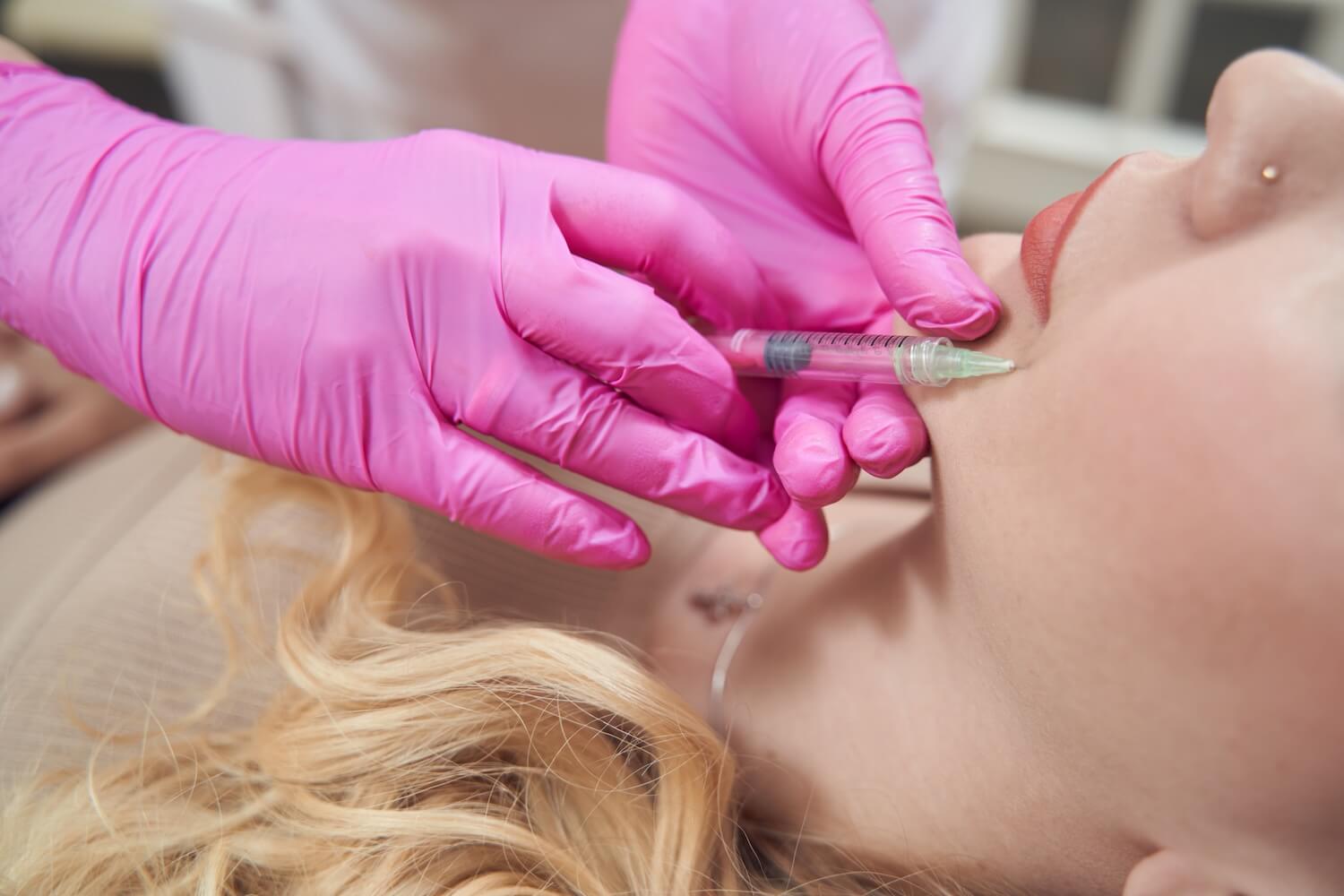The growing popularity of injectable treatments has revolutionized the way people approach cosmetic enhancements. Whether it’s smoothing wrinkles, restoring lost volume, or contouring facial features, injectables like Botox, dermal fillers, and Kybella have become key tools in modern aesthetic treatments. These non-surgical procedures are accessible, minimally invasive, and often deliver results with minimal downtime, making them an attractive option for many. But despite their popularity, many individuals remain uncertain about what the journey from consultation to treatment entails.
This article will take you through each step of the injectables process, from the first consultation to aftercare and everything in between, to ensure you’re fully informed and confident in your treatment decision.
1. The Surge in Popularity of Injectables
In recent years, injectable treatments have emerged as the go-to non-surgical option for individuals seeking cosmetic enhancements. According to the American Society for Aesthetic Plastic Surgery, injectable treatments have seen a dramatic rise in popularity, with Botox and dermal fillers ranking among the top cosmetic procedures. This surge in demand is not surprising given the accessibility, affordability, and impressive results these treatments offer. With busy lifestyles and a desire for quick, effective results, injectables provide a compelling alternative to traditional surgical options.
Botox, dermal fillers, and other injectables are an appealing option for people who want to look younger, reduce the signs of aging, or enhance their facial features without undergoing lengthy recovery times. These treatments are quick, minimally invasive, and can be performed with little to no downtime, allowing patients to continue their daily activities almost immediately after the procedure.
The key to their success lies in their ability to achieve subtle yet significant improvements. Injectables help you look refreshed, rejuvenated, and more youthful without the need for a drastic transformation. Whether you’re trying to smooth out forehead lines, plump up your lips, or sculpt your jawline, injectables can help you achieve the results you desire in a safe and controlled manner.
2. Understanding Your Injectable Options
Before diving into your injectables journey, it’s essential to understand the different types of injectables available. While Botox and dermal fillers are the most commonly known injectables, there are several other options that target specific concerns. Here’s an in-depth look at the primary injectable treatments:
Botox and Dysport Injectables: Relaxing Wrinkles with Botulinum Toxin
Botox and Dysport are both injectable treatments derived from botulinum toxin type A. These treatments are designed to smooth out dynamic wrinkles—those formed by repetitive facial movements, such as frown lines, crow’s feet, and forehead wrinkles. Botox works by temporarily blocking the nerve signals to the muscles that cause these wrinkles, effectively relaxing the muscles and giving the skin a smoother appearance.
Botox is best suited for those looking to reduce the appearance of wrinkles caused by facial expressions. It’s a popular choice for individuals in their 30s and 40s, when the first signs of aging typically begin to show. Dysport is a similar injectable to Botox, offering the same benefits but with a slightly faster onset of action and broader spread, making it ideal for larger treatment areas like the forehead.
Dermal Fillers: Restoring Volume and Contour
Dermal fillers, including hyaluronic acid-based products like Juvederm and Restylane, are injectable treatments that help restore lost volume, smooth deep wrinkles, and rejuvenate the face. Unlike Botox, which targets the muscles beneath the skin, dermal fillers are injected directly into the skin to add fullness to specific areas.
They are ideal for treating static wrinkles—wrinkles that are visible even when the face is at rest. Fillers are commonly used to plump the lips, smooth smile lines (nasolabial folds), restore volume in the cheeks, and improve under-eye hollows. Hyaluronic acid fillers can also add volume to the hands, restore definition to the jawline, and even enhance the chin. Results are immediately visible, and while fillers are not permanent, they typically last between 6 and 18 months, depending on the product used.
Sculptra: Collagen-Stimulating for Long-Lasting Results
Sculptra is a unique dermal filler that works differently from traditional hyaluronic acid-based fillers. Instead of simply adding volume to the skin, Sculptra stimulates the body’s natural collagen production. Collagen is a protein that provides structure and elasticity to the skin, and as we age, our collagen production decreases, leading to sagging and wrinkles.
Sculptra helps rebuild this collagen network, leading to more gradual, long-lasting improvements over time. Typically, Sculptra is used in the midface to restore volume loss in the cheeks, temples, and around the chin. The full effect may take a few months to be fully visible, and results can last for up to two years.
Kybella Injections: Sculpting the Jawline
Kybella is an injectable treatment that targets submental fat—more commonly known as a double chin. This treatment is based on deoxycholic acid, a naturally occurring substance in the body that helps break down fat. Kybella works by destroying the fat cells under the chin, which are then gradually eliminated by the body’s natural processes.
For patients with excess fat beneath the chin, Kybella offers a non-invasive solution to contour the jawline and restore a youthful profile. Unlike other injectables that smooth wrinkles or add volume, Kybella focuses on fat reduction. The results are permanent, as the fat cells are permanently destroyed, but multiple treatment sessions are often required to achieve the desired outcome.
3. Finding the Right Provider: Why Expertise Matters
Choosing the right injector is a critical step in ensuring the success of your injectables treatment. While injectable treatments may seem simple, they require a high level of skill and precision. The difference between a natural, rejuvenated appearance and an overdone, unnatural look often comes down to the expertise of the injector.
Board-Certified Professionals
When selecting a provider, it’s essential to work with a licensed and board-certified professional. Ideally, your injector should be a board-certified dermatologist, plastic surgeon, or nurse practitioner with advanced training in injectables. Board-certified professionals have undergone extensive education and training, ensuring they have the knowledge and experience to perform the treatments safely and effectively.
Consultation and Customization Journey
A good injector will take the time to understand your aesthetic goals and customize the treatment to fit your unique needs. During your consultation, they will assess your facial anatomy, evaluate your skin, and discuss your expectations. An experienced injector should never try to push specific products on you but will instead provide a range of options and explain how each injectable can help you achieve your desired results.
Client Reviews and Before-and-After Photos
Before committing to any provider, it’s a good idea to research their reputation and experience. Look for online reviews and testimonials from past clients to gauge their satisfaction with the results. Additionally, ask your injector for before-and-after photos of previous patients. This will give you a better understanding of the injector’s technique and the kinds of results you can expect.
4. The Consultation Process: Setting Expectations
The consultation is one of the most important steps in your injectables journey. It’s your chance to discuss your goals with your provider, ask questions, and make sure you’re on the same page about the results you can expect.
Discussing Your Goals
During the consultation, your injector will want to know what you’re hoping to achieve with the treatment. Are you interested in reducing forehead wrinkles, enhancing your lips, or sculpting your jawline? Be as specific as possible about the changes you’d like to see. A clear understanding of your goals will help the provider recommend the most appropriate treatment plan.
Health Assessment
Your provider will also take a detailed medical history, including any allergies, previous cosmetic treatments, and medications you’re currently taking. Certain conditions, such as pregnancy or active skin infections, may contraindicate injectable treatments, so it’s important to share any relevant information during your consultation.
Setting Realistic Expectations
While injectables can provide dramatic improvements, it’s important to have realistic expectations. Your injector will guide you through the potential results of each treatment and help you understand what’s achievable. They should also inform you about any potential side effects, such as bruising, swelling, or redness at the injection site, and let you know what you can expect in terms of recovery time.
5. The Injection Process: What to Expect on Treatment Day
Once you’ve decided to move forward with your injectables treatment, it’s time for the procedure itself. Here’s what you can expect during your session:
Pre-Treatment Preparation
Before the procedure begins, your provider will clean the treatment area to reduce the risk of infection. Some injectables require a topical numbing cream to be applied to the skin, while others may involve a small amount of local anesthesia to minimize discomfort. This ensures that the injection process is as comfortable as possible.
The Injection Process
During the procedure, the injector will carefully administer the chosen injectable using a fine needle. Depending on the area being treated, multiple injections may be required. The entire process usually takes anywhere from 15 to 45 minutes, depending on the complexity of the treatment.
For Botox or Dysport, the injections are typically quick and relatively painless. Dermal fillers may require more precision, as the injector places the filler in specific areas of the face to restore volume and contour. The injector will use their experience and expertise to ensure the results are natural and balanced.
After the Procedure
Once the treatment is complete, your provider will assess the results and ensure you’re happy with the outcome. In most cases, you can return to your normal activities immediately after the treatment, although it’s advisable to avoid strenuous exercise and excessive heat for the first 24 to 48 hours to minimize the risk of bruising or swelling.
6. Post-Treatment Care: Ensuring Lasting Results
While injectables are minimally invasive, it’s still important to follow proper aftercare instructions to maximize your results and minimize any potential side effects.
Managing Swelling and Bruising
Some swelling or bruising at the injection site is common after treatment. This typically resolves within a few days, but applying ice or a cold compress to the area can help reduce swelling. If you experience bruising, over-the-counter makeup can be used to cover it until it fades.
Avoiding Touching the Treated Area
To avoid any complications, try not to touch or massage the treated area for the first 24 hours. Excessive manipulation can cause the injectable to migrate to unintended areas.
Long-Term Results and Follow-Up
Injectable treatments are not permanent, so you’ll need periodic touch-up treatments to maintain your results. Botox and similar injectables typically last around 3-6 months, while dermal fillers can last anywhere from 6 to 18 months, depending on the product used and the area treated.
Be sure to schedule follow-up appointments with your provider to keep your results looking fresh and to assess any changes in your aesthetic needs over time.
7. Boosting Your Confidence: The Final Result
After your injectables journey, you should feel a boost in confidence as you notice the improvements in your appearance. Whether it’s smooth skin, fuller lips, or a more sculpted jawline, injectables can help you look and feel your best.
By choosing the right provider, setting realistic expectations, and following proper aftercare, you’ll be well on your way to achieving the aesthetic results you desire.
Injectables are more than just a cosmetic treatment—they are a tool that helps you regain your confidence and embrace your natural beauty. If you’re ready to start your injectables journey, book a consultation today to explore how these transformative treatments can enhance your look and improve how you feel about yourself.

